The Use of Glass from Photovoltaic Panels at the End of Their Life Cycle in Cement Composites
Abstract
:1. Introduction
2. Materials and Methods
2.1. Recyclate from Photovoltaic Panels
2.2. Cement
2.3. Mixing Water
2.4. Recipe Design
2.5. Preparation of Test Specimens
2.6. Methods Testing the Recyclate Properties
2.7. Metohods Testing the Cement Composites
2.8. Image Analysis
2.9. Permeability
2.10. Test Specimens
3. Results and Discussion
3.1. Density and Absorptive Capacity of Recycled Glass
3.2. Grain Size Composition of Recycled Glass
3.3. Consistency of Fresh Concrete Mixture
3.4. Flexural and Compressive Strength
3.5. Image Analysis
- The individual fractions of recycled glass from photovoltaic panels are evenly represented in the hardened cement composite. No effect of segregation of individual grains was found.;
- It can be seen that fine grains of recycled glass are evenly distributed in the cement paste;
- None of the samples (R1–R5) show disruption of the contact zone (ITZ) between the grains of recycled glass and the cement paste;
- It was confirmed that the cement composites based on recycled glass from solar panels can be polished and thus highlight the 3D effect of recycled glass grains fr. 4/10 mm.
3.6. Permeability
4. Results
- Replacement of natural aggregate with recycled glass fraction 0/10 mm is possible;
- The densities of recycled glass fraction 0.0/0.5 mm, fraction 0.5/1 mm, fraction 1/4 mm and fraction 4/10 mm are similar and reach the values of approximately 2.5 mg/m3;
- The consistency of fresh cement mixture based on recycled glass was within the spillage range of 183–200 mm. This means that all the recipes were designed with a similar consistency of fresh cement mixture with natural aggregate and recycled glass from photovoltaic panels;
- The flexural and compressive strengths are almost identical for recipes R1 to R5. In case of flexural strength, the values are within the range of 4.2–4.9 MPa, in case of compressive strength, the values are within the range of 38.3–42.2 MPa;
- With 100% replacement of natural aggregate with recycled glass from photovoltaic panels in cement composites, it is necessary to take into account a decrease in flexural strength and compressive strength by approximately 20–30%;
- The results of the image analysis have confirmed the non-disruption of the contact zone between the grains of the recycled glass and the cementing compound. They have also confirmed the possibility of surface treatment of cement composites by grinding and polishing in order to enhance the 3D effect of glass grains in cement composite;
- Based on the RCP test, it has been found that the permeability of cement composites with recycled glass from photovoltaic panels shows values similar to conventional cement composites for a water-cement ratio of 0.4–0.5;
- The RCP test has also demonstrated the possibility of precise measuring and determination of permeability, and its further use in evaluating the internal structure of cement composites can be seen in the evaluation of the compaction, homogeneity or the potential of exposed surface of the cement composite to resist the penetration of aggressive substances;
- Future research will be focused on the modification of recipes R1 to R5 in order to increase the flexural strength to a minimum value of 6 MPa;
- The practical use of cement composites with 100% replacement of natural aggregate with recycled glass from photovoltaic panels can be: facing material for interior walls; construction of the upper layer of the floor (similar to teraso material);
- Future research will be focused on testing the alkali–silica reaction of recycled glass grains from solar panels. Furthermore, we will deal with the issue of surface treatment (grinding, polishing) of the designed cement composites for the purpose of their potential use in the interior as paving or tiling material.
Author Contributions
Funding
Institutional Review Board Statement
Informed Consent Statement
Data Availability Statement
Conflicts of Interest
References
- Recycling of Photovoltaic Panels on the End of Life. Available online: https://oze.tzb-info.cz/fotovoltaika/7868-recyklace-fotovoltaickych-panelu-na-konci-zivotnosti (accessed on 19 September 2021).
- Weckend, S.; Wade, A.; Heath, G.A. End of Life Management: Solar Photovoltaic Panels; National Renewable Energy Lab. (NREL): Golden, CO, USA, 2016. [Google Scholar]
- European Union. Directive 2012/19/EU of the European Parliament and of the Council of 4 July 2012 on Waste Electrical and Electronic Equipment (WEEE). Official Journal of the European Union 2012. Available online: https://eur-lex.europa.eu/legal-content/EN/TXT/PDF/?uri=CELEX:32012L0019&from=EN (accessed on 31 May 2021).
- Bagher, A.M.; Vahid, M.M.A.; Mohsen, M. Types of Solar Cells and Application. Am. J. Opt. Photonics 2015, 3, 94. [Google Scholar] [CrossRef] [Green Version]
- History and Perspectives of RES—Photovoltaics, Less Common Technologies. Available online: https://oze.tzb-info.cz/fotovoltaika/5517-historie-a-perspektivy-oze-fotovoltaika-mene-rozsirene-technologie (accessed on 7 September 2021).
- Bruton, T.M. General Trends about Photovoltaics Based on Crystalline Silicon. Sol. Energy Mater. Sol. Cells 2002, 72, 3–10. [Google Scholar] [CrossRef]
- Solar Panels—RD Solar. Available online: https://www.rdsolar.cz/hybridni-fotovoltaicke-elektrarny/solarni-panely/ (accessed on 7 September 2021).
- Photovoltaics Report-Fraunhofer ISE. Available online: https://www.ise.fraunhofer.de/de/veroeffentlichungen/studien/photovoltaics-report.html (accessed on 7 May 2021).
- Majewski, P.; Al-shammari, W.; Dudley, M.; Jit, J.; Lee, S.-H.; Myoung-Kug, K.; Sung-Jim, K. Recycling of Solar PV Panels—Product Stewardship and Regulatory Approaches. Energy Policy 2021, 149, 112062. [Google Scholar] [CrossRef]
- Macalova, K.; Vaclavik, V.; Dvorsky, T.; Svoboda, J.; Charvat, J.; Gola, L. Recycling of Photovoltaic Panels—A Review of the Current Trends. IOP Conf. Ser. Mater. Sci. Eng. 2020, 867, 012029. [Google Scholar] [CrossRef]
- Afshinnia, D.K.; Ga, P.E.L. Waste Glass in Concrete; Pros and Cons. Available online: https://www.concretedecor.net/departments/concrete-placing/waste-glass-in-concrete-has-advantages-and-disadvantages/ (accessed on 31 May 2021).
- Esmaeili, J.; Oudah AL-Mwanes, A. A Review: Properties of Eco-Friendly Ultra-High-Performance Concrete Incorporated with Waste Glass as a Partial Replacement for Cement. Mater. Today Proc. 2021, 42, 1958–1965. [Google Scholar] [CrossRef]
- Ducman, V.; Mladenovič, A.; Šuput, J.S. Lightweight Aggregate Based on Waste Glass and Its Alkali–Silica Reactivity. Cem. Concr. Res. 2002, 32, 223–226. [Google Scholar] [CrossRef]
- Adhikary, S.K.; Ashish, D.K.; Rudžionis, Ž. Expanded Glass as Light-Weight Aggregate in Concrete—A Review. J. Clean. Prod. 2021, 313, 127848. [Google Scholar] [CrossRef]
- Ali-Boucetta, T.; Behim, M.; Cassagnabere, F.; Mouret, M.; Ayat, A.; Laifa, W. Durability of Self-Compacting Concrete Containing Waste Bottle Glass and Granulated Slag. Constr. Build. Mater. 2021, 270, 121133. [Google Scholar] [CrossRef]
- Borhan, T.M. Properties of Glass Concrete Reinforced with Short Basalt Fibre. Mater. Des. 2012, 42, 265–271. [Google Scholar] [CrossRef]
- Dong, W.; Li, W.; Tao, Z. A Comprehensive Review on Performance of Cementitious and Geopolymeric Concretes with Recycled Waste Glass as Powder, Sand or Cullet. Resour. Conserv. Recycl. 2021, 172, 105664. [Google Scholar] [CrossRef]
- Bambas Elekroodpady. Available online: http://www.bares-bambas.cz (accessed on 20 October 2021).
- CSN EN 197-1. Cement—Part. 1: Composition, Specifications and Conformity Criteria for Common Cements; ČSN: Praha, Czech Republic, 2012. [Google Scholar]
- CSN EN 1008. Mixing Water for Concrete—Specification for Sampling; ČSN: Praha, Czech Republic, 2003. [Google Scholar]
- 4C-Packing—User’s Manual. Available online: https://www.dti.dk/4c-packing/user-s-manual/2783,3 (accessed on 25 October 2021).
- CSN EN 12620 (721502). Aggregates for Concrete; ČSN: Praha, Czech Republic, 2008. [Google Scholar]
- CSN EN 196-1. Cement—Part. 1: Determination of Strength; ČSN: Praha, Czech Republic, 2016. [Google Scholar]
- CSN EN 933-2. Tests for Geometrical Properties of Aggregates—Part 2: Determination of Particle Size Distribution—Test Sieves, Nominal Size of Apertures; ČSN: Praha, Czech Republic, 1997. [Google Scholar]
- CSN EN 1097-6. Tests for Mechanical and Physical Properties of Aggregates—Part. 6: Determination of Particle Density and Water Absorption; ČSN: Praha, Czech Republic, 2014. [Google Scholar]
- CSN EN 1015-3. Methods of Test for Mortar for Masonry—Part. 3: Determination of Consistence of Fresh Mortar (by Flow Table); ČSN: Praha, Czech Republic, 2000. [Google Scholar]
- ASTM C1202—19 Standard Test Method for Electrical Indication of Concrete’s Ability to Resist Chloride Ion Penetration. Available online: https://www.astm.org/Standards/C1202 (accessed on 29 September 2021).
- Stehlík, M.; Knapová, J.; Kostka, V. Possibilities of Use of Glass Recyclate from Photovoltaic Panels for Concrete Masonry Units. IOP Conf. Ser. Mater. Sci. Eng. 2019, 549, 012006. [Google Scholar] [CrossRef]
- PRECHEZA: FEPREN, Iron Oxide Pigments. Available online: https://www.precheza.cz/en/fepren-iron-oxide-pigments/ (accessed on 20 October 2021).
- Julio-Betancourt, G.A.; Hooton, R.D. Study of the Joule Effect on Rapid Chloride Permeability Values and Evaluation of Related Electrical Properties of Concretes. Cem. Concr. Res. 2004, 6, 1007–1015. [Google Scholar] [CrossRef]
- Kim, Y.-Y.; Lee, K.-M.; Bang, J.-W.; Kwon, S.-J. Effect of W/C Ratio on Durability and Porosity in Cement Mortar with Constant Cement Amount. Adv. Mater. Sci. Eng. 2014, 2014, 1–11. [Google Scholar] [CrossRef] [Green Version]
- Shen, W. Behavior of High Performance Concrete Pastes with Different Mineral Admixtures in Simulated Seawater Environment. Constr. Build. Mater. 2018, 187, 426–438. [Google Scholar] [CrossRef]
- Chan, W.W.J.; Wu, C.M.L. Durability of Concrete with High Cement Replacement. Cem. Concr. Res. 2000, 30, 865–879. [Google Scholar] [CrossRef]
- Nežerka, V.; Bílý, P.; Hrbek, V.; Fládr, J. Impact of Silica Fume, Fly Ash, and Metakaolin on the Thickness and Strength of the ITZ in Concrete. Cem. Concr. Compos. 2019, 103, 252–262. [Google Scholar] [CrossRef]
- Tamanna, N.; Tuladhar, R.; Sivakugan, N. Performance of Recycled Waste Glass Sand as Partial Replacement of Sand in Concrete. Constr. Build. Mater. 2020, 239, 117804. [Google Scholar] [CrossRef]
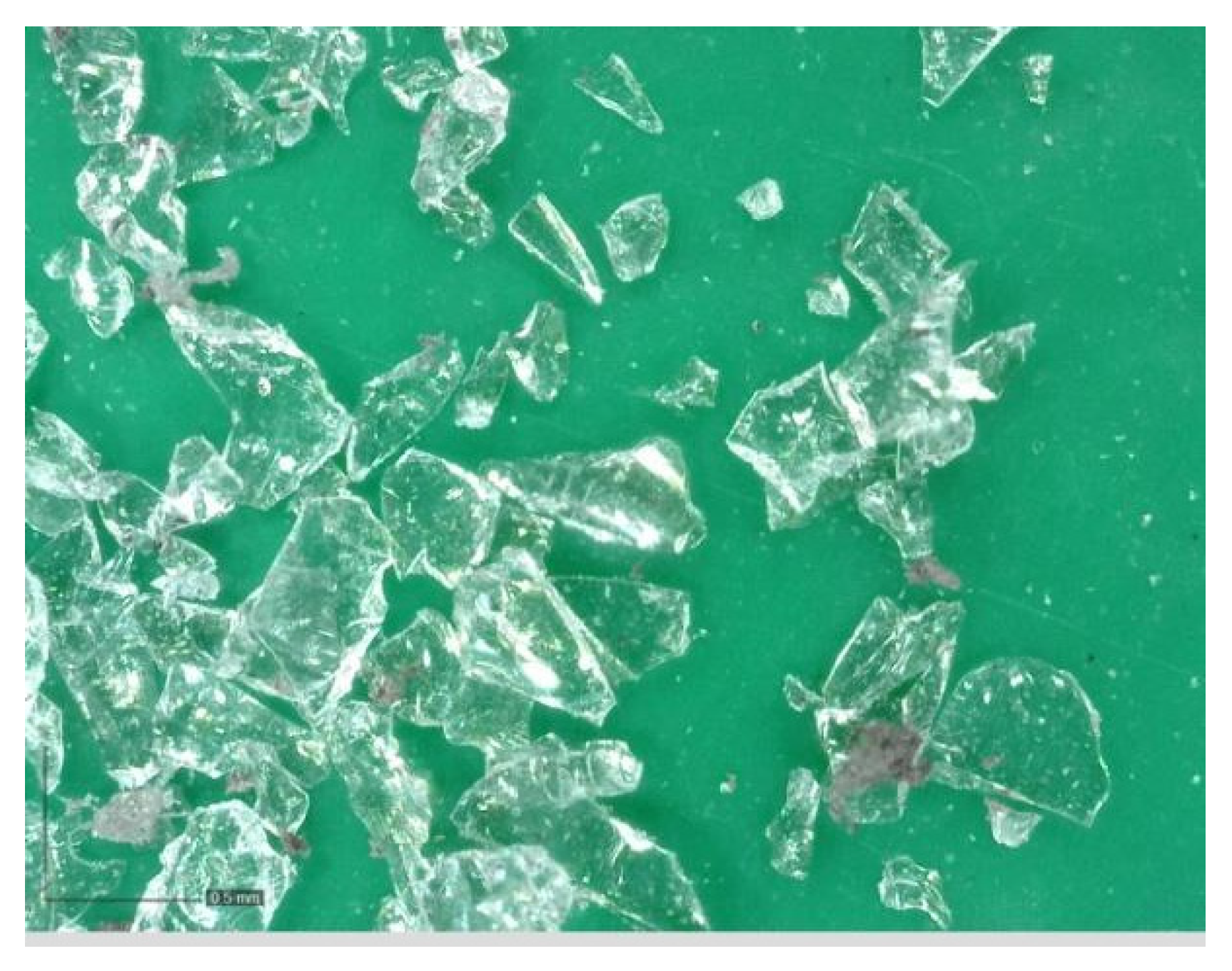
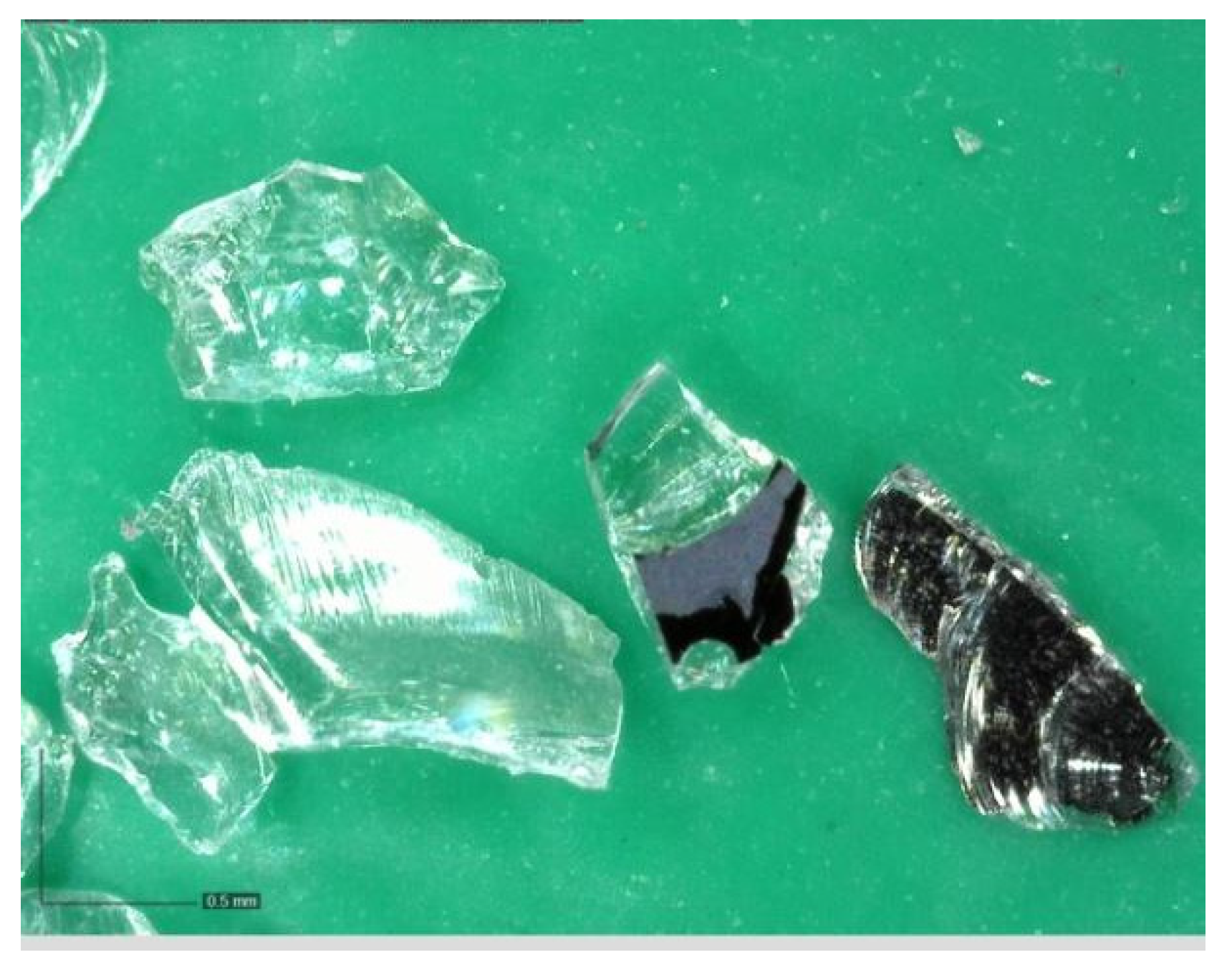
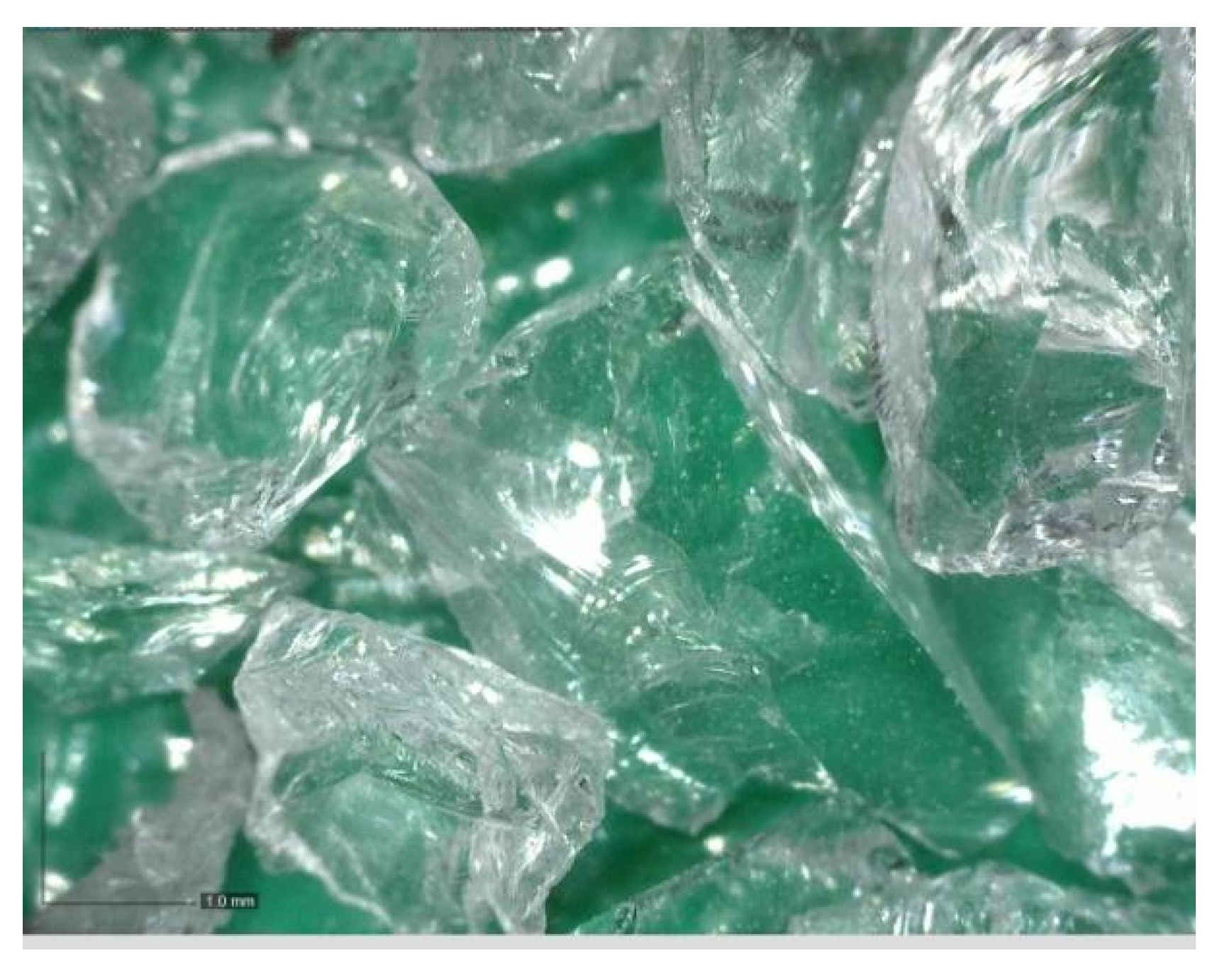
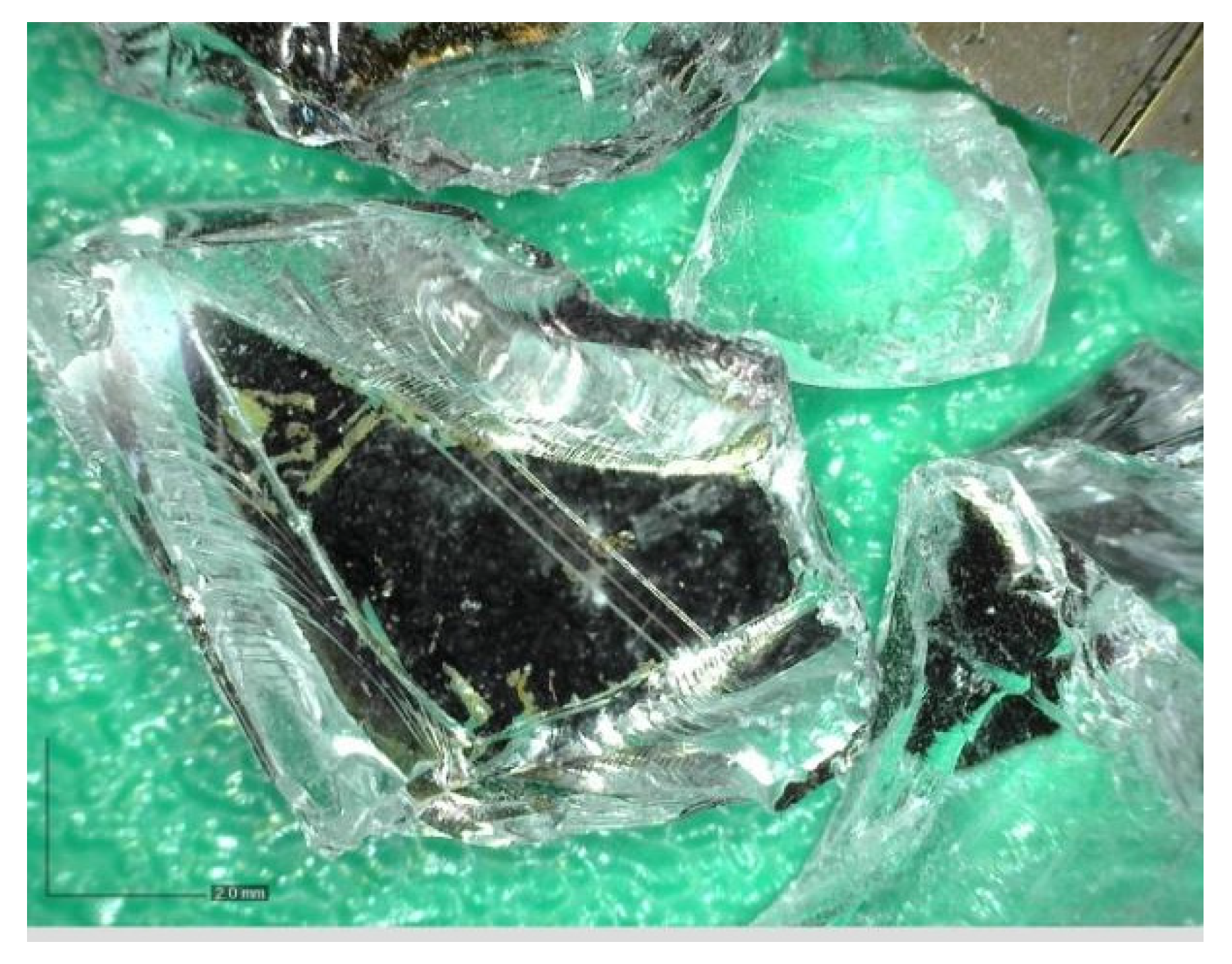
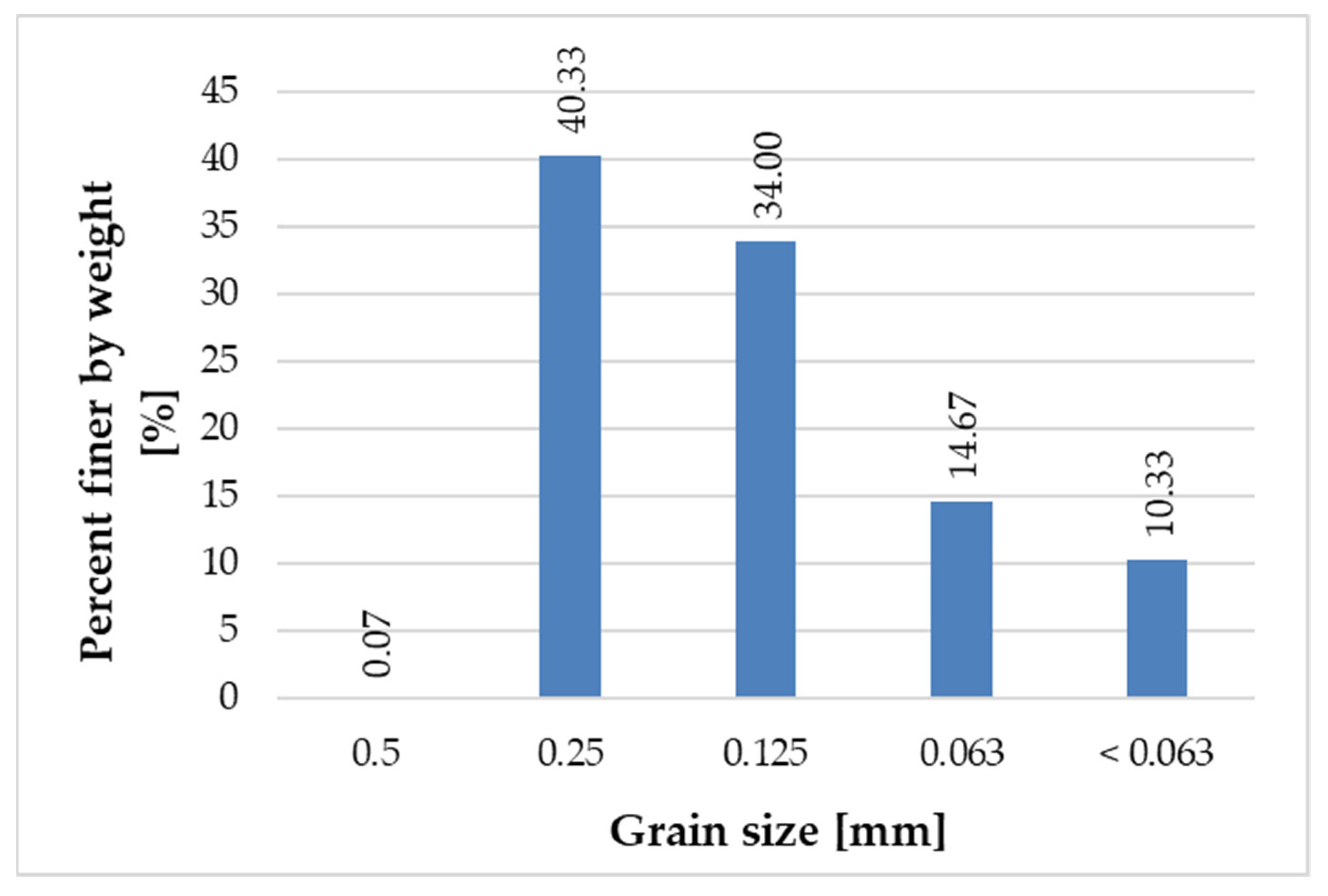
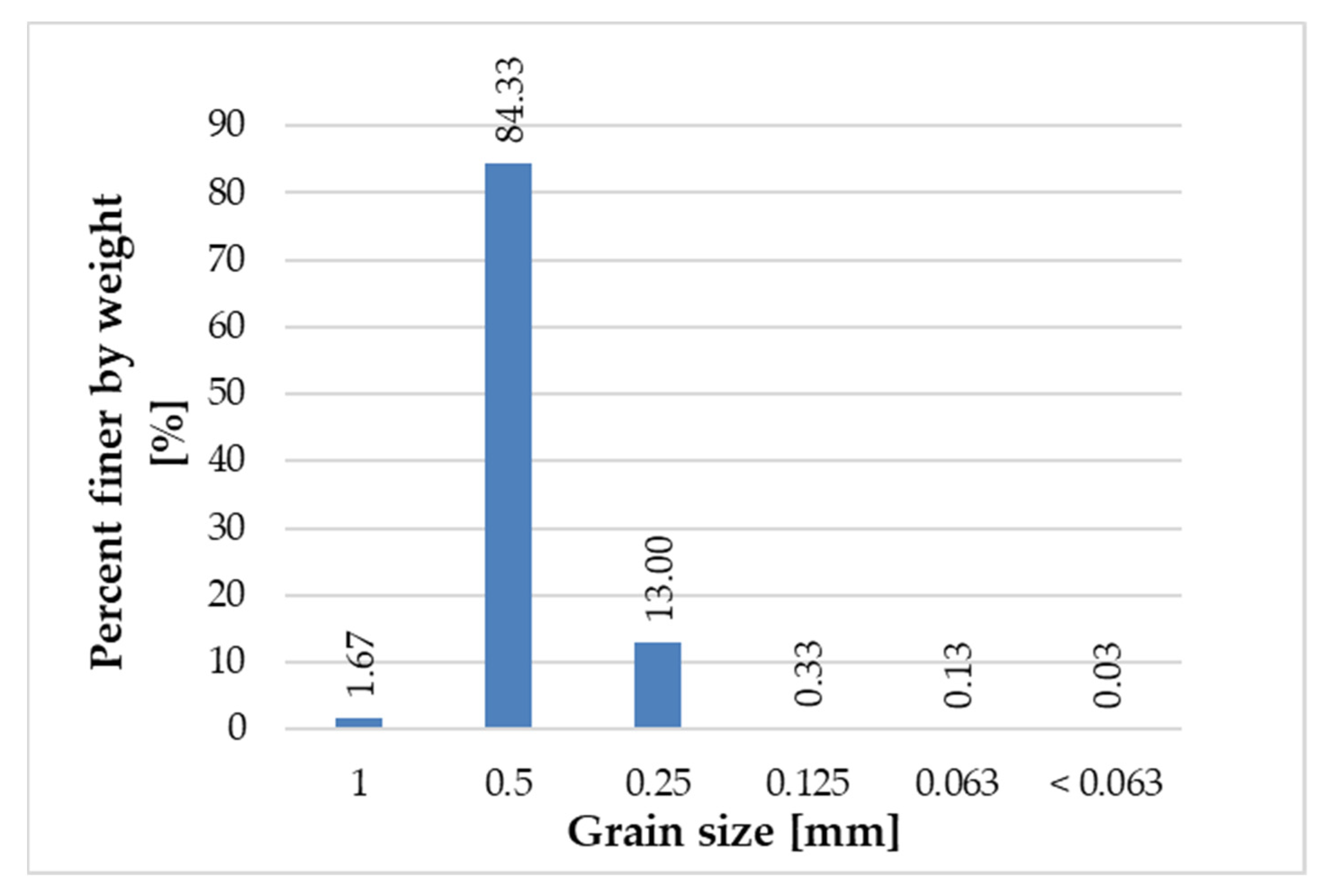
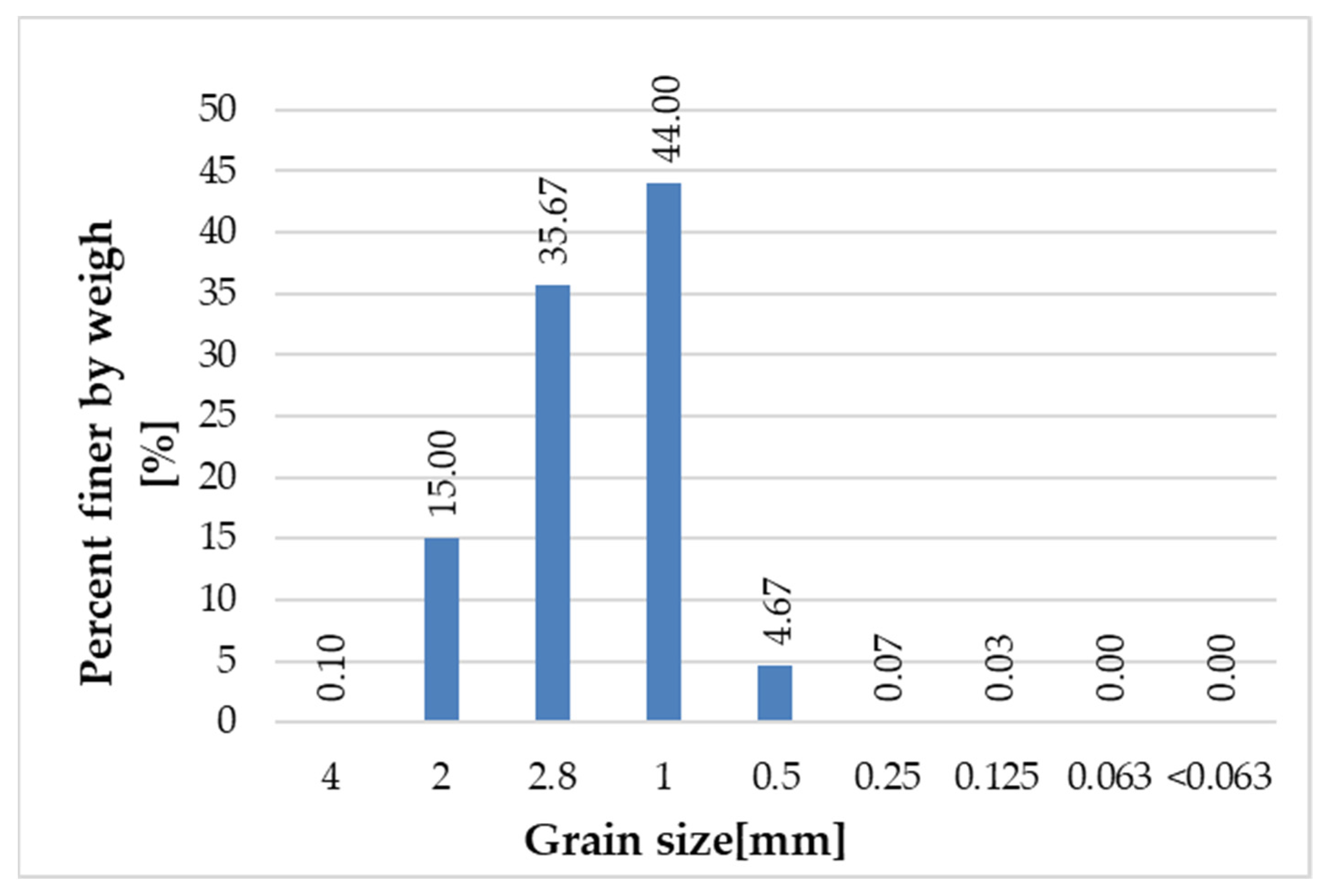
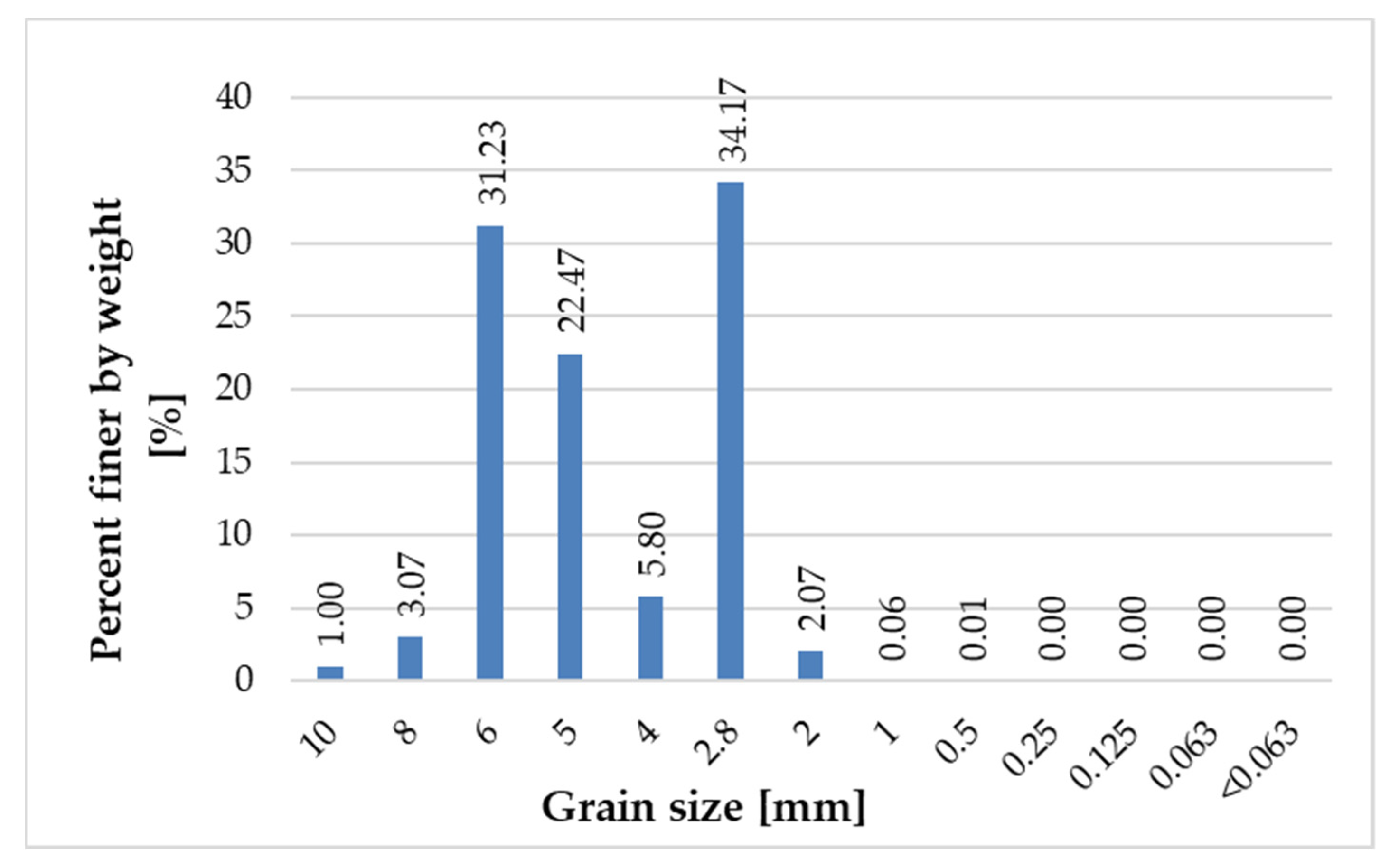

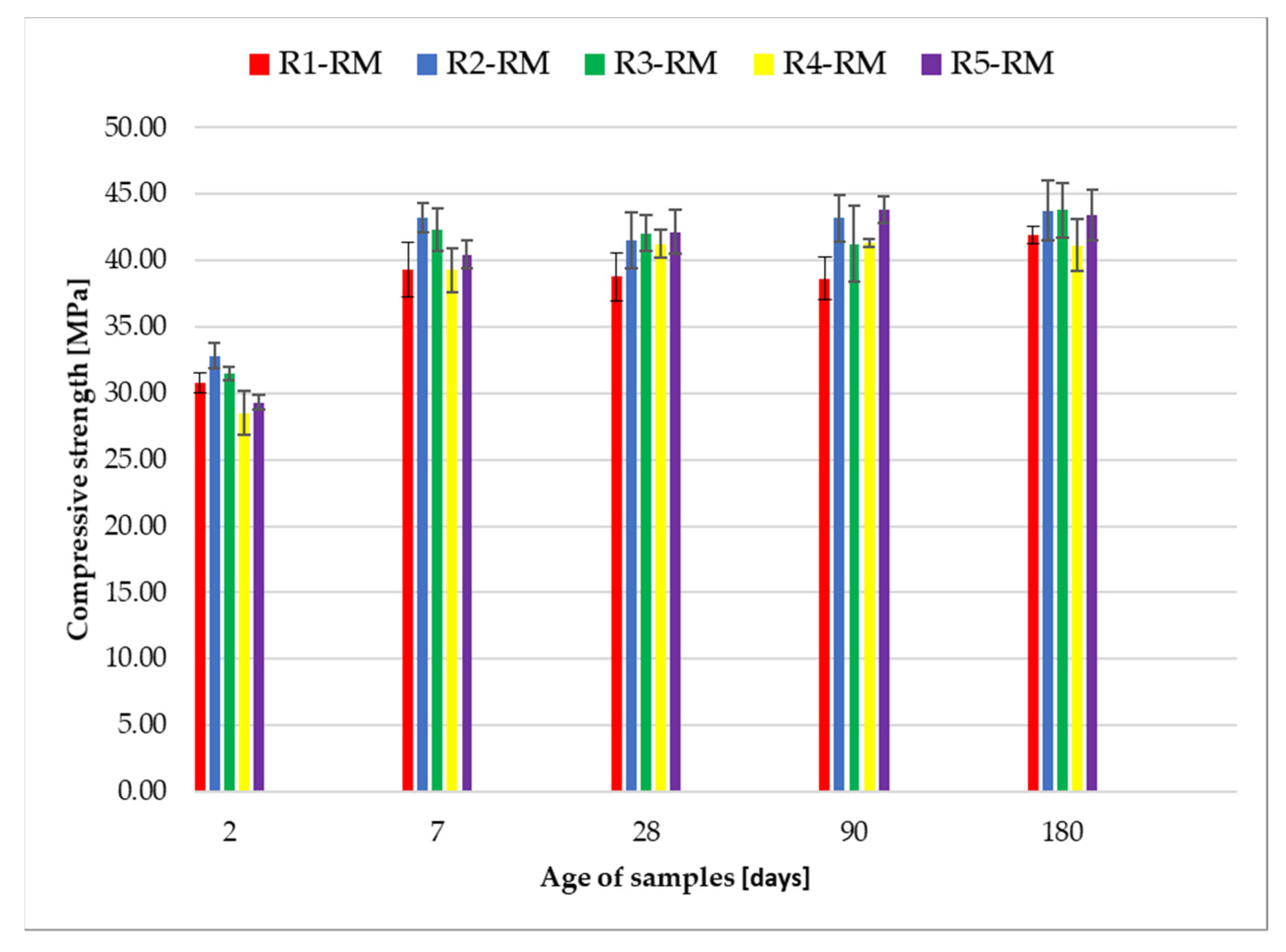
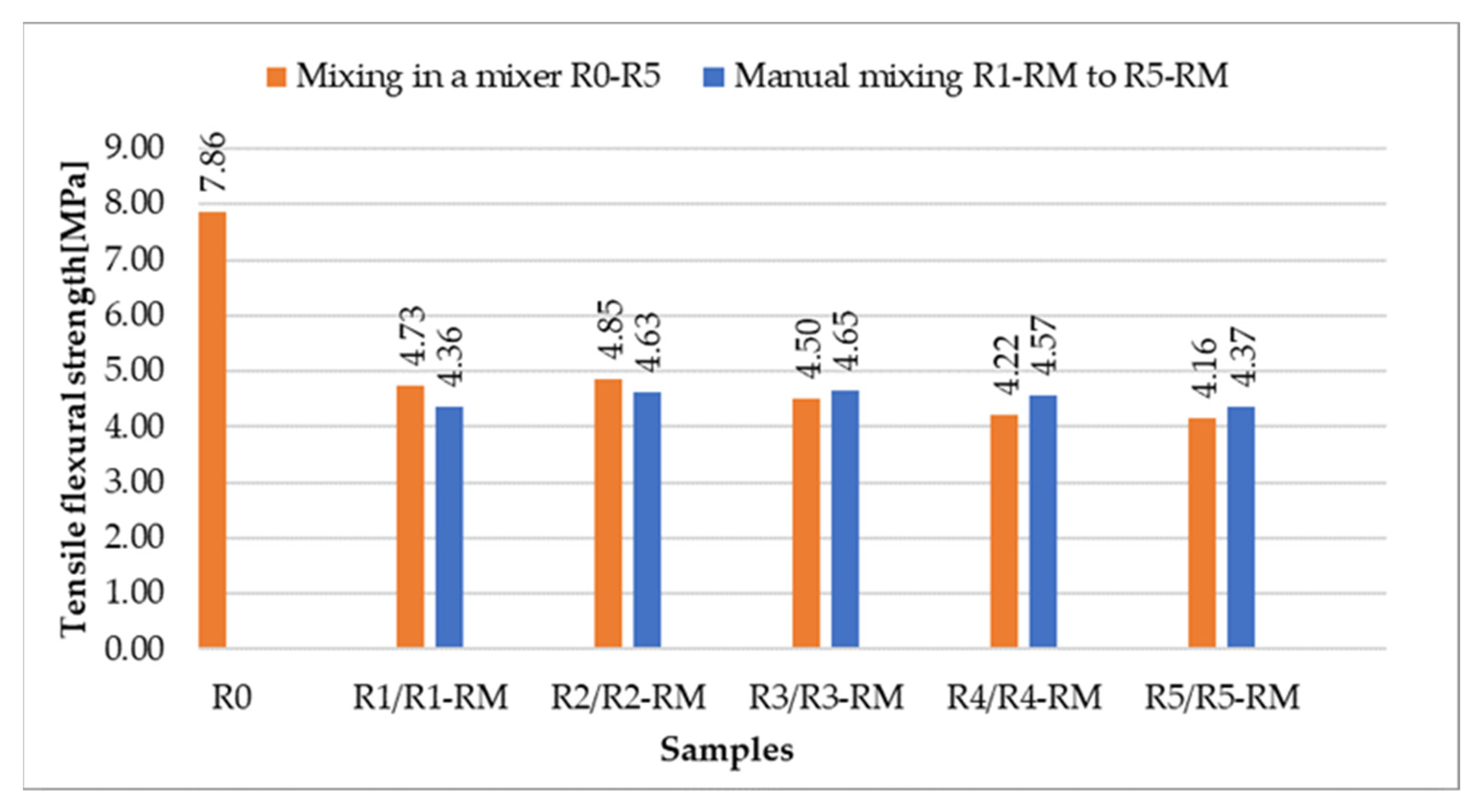
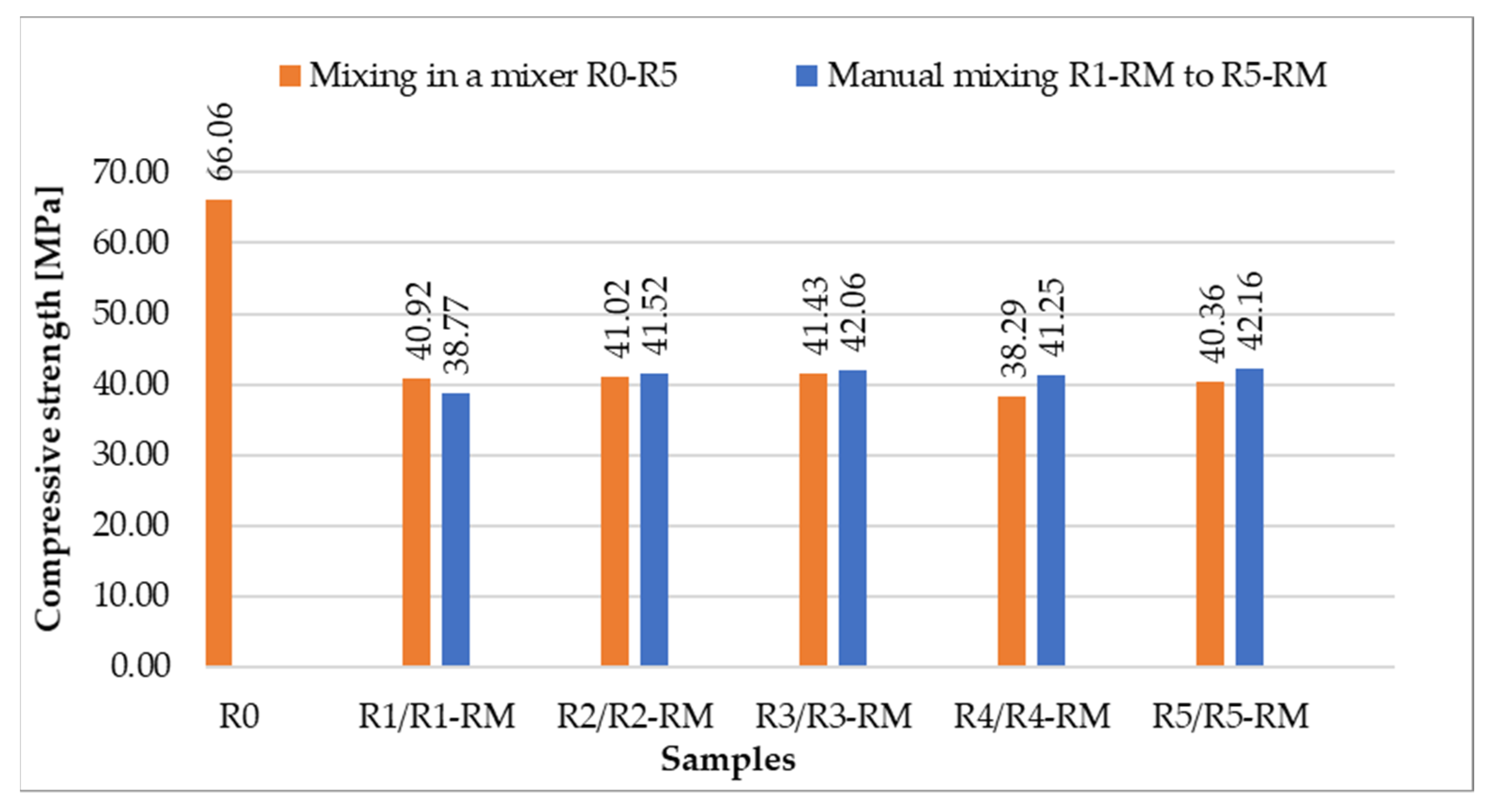
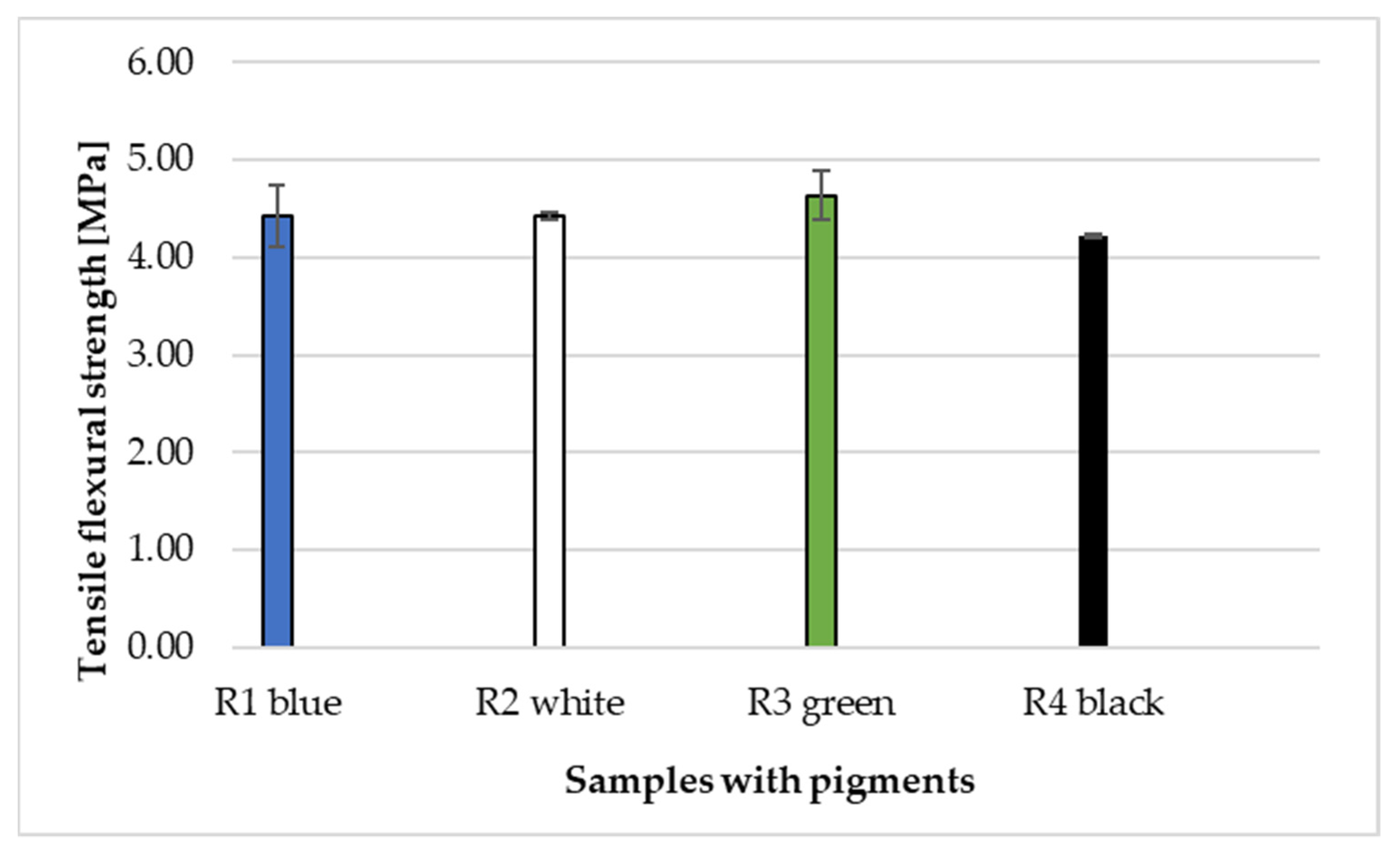
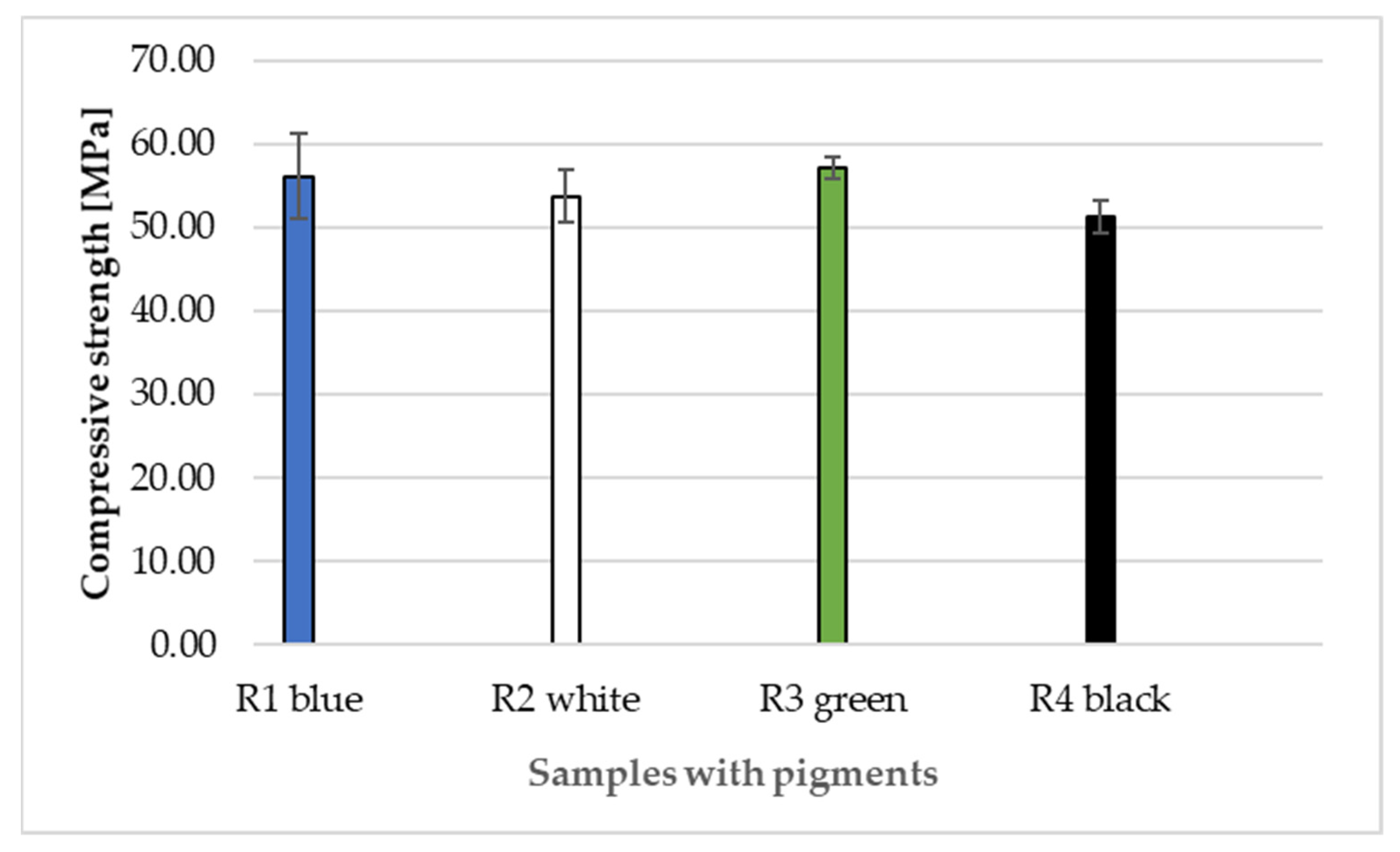
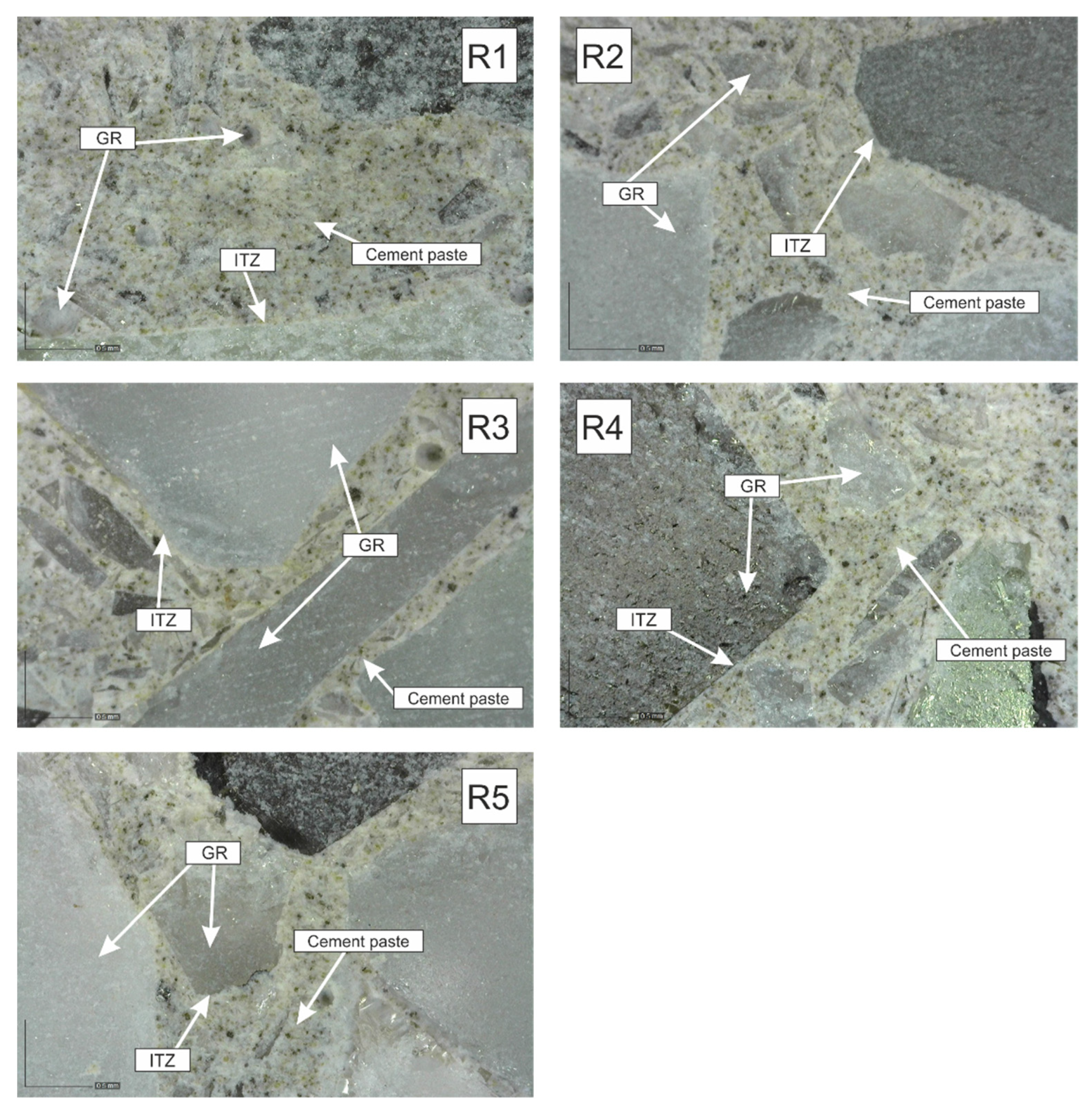

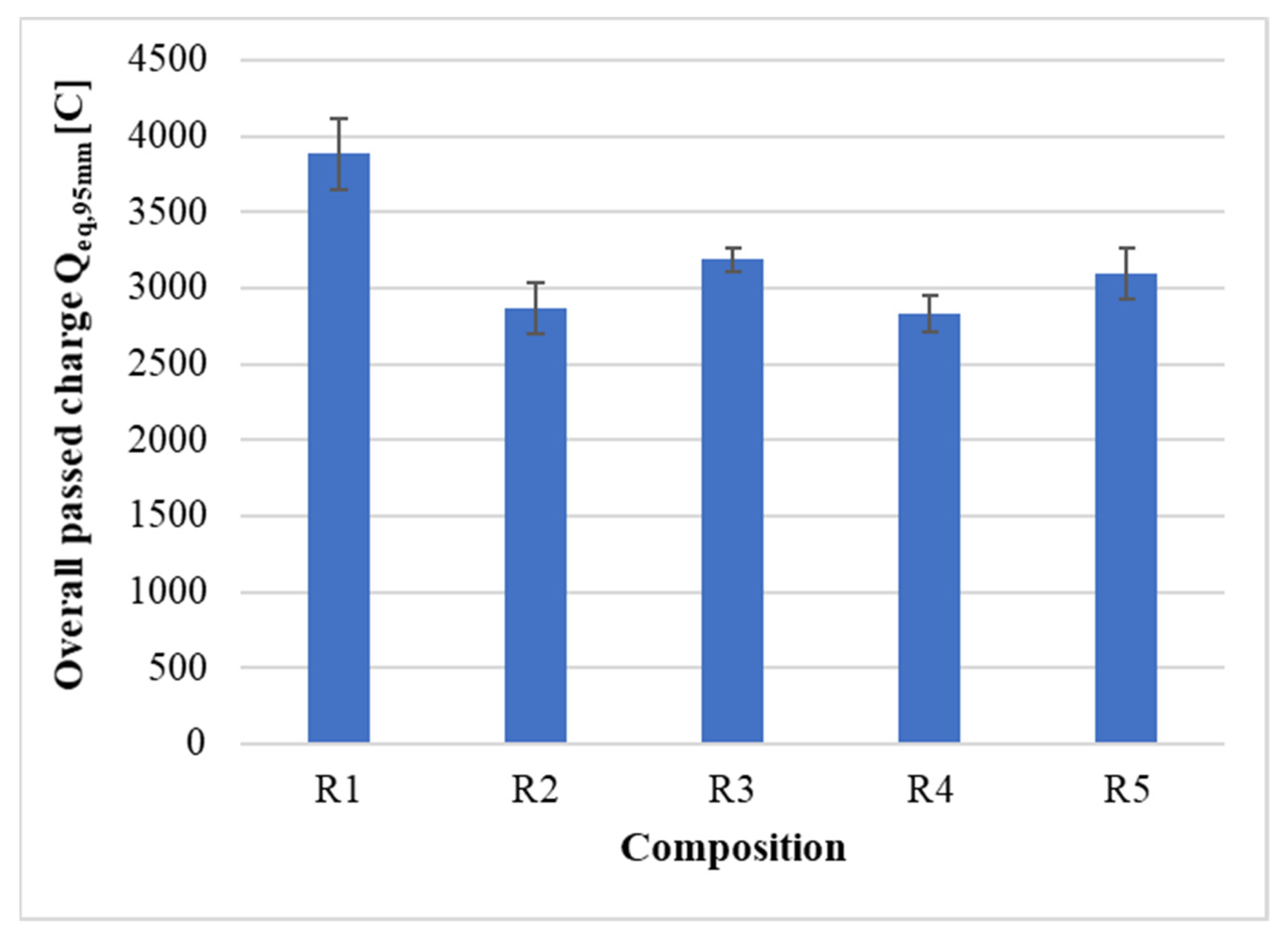
| Analyte | Crushed Mat. R3 Solid | Cement Composite Extract R3 | ||
|---|---|---|---|---|
| Results [mg/kg] | Uncertainty [%] | Results [mg/L] | Uncertainty [%] | |
| As | 1.3 | 50 | <0.001 | - |
| Cd | 186.0 | 30 | <0.004 | - |
| Cr | 22.9 | 30 | <0.010 | - |
| Hg | <0.1 | <0.001 | - | |
| Ni | 15.8 | 40 | <0.010 | - |
| Pb | 2.6 | 50 | <0.020 | - |
| V | 2.2 | 50 | - | - |
| Technical Parameter | Requirement of EN 197-1 | Average Values Achieved |
|---|---|---|
| Compressive strength after 2 days [MPa] | ≥30 | 42.0 |
| Compressive strength after 28 days [MPa] | ≥52.5 | 67.5 |
| Beginning of setting [min.] | ≥45 | 140 |
| Volume stability [mm] | ≤10 | 1.5 |
| Sulphate cont. [% weight] | ≤4.0 | 2.47 |
| Insoluble residue [% weight] | ≤5.0 | 0.29 |
| Annealing loss [% weight] | ≤5.0 | 2.55 |
| Formula | Recycled Glass Fraction [mm] | |||
|---|---|---|---|---|
| 0.0/0.5 | 0.5/1 | 1/4 | 4/10 | |
| R1 | 13% | 14% | 0% | 73% |
| R2 | 15% | 14% | 0% | 71% |
| R3 | 14% | 14% | 5% | 67% |
| R4 | 9% | 8% | 0% | 83% |
| R5 | 9% | 8% | 9% | 74% |
| Components | R1 | R2 | R3 | R4 | R5 |
|---|---|---|---|---|---|
| cement CEM I 52.5 R | 563 | 563 | 563 | 563 | 563 |
| water | 281 | 281 | 281 | 281 | 281 |
| GR fraction 0.0/0.5 mm | 218 | 253 | 236 | 152 | 152 |
| GR fraction 0.5/1 mm | 236 | 236 | 236 | 135 | 135 |
| GR fraction 1/4 mm | 0 | 0 | 84 | 0 | 152 |
| GR fraction 4/10 mm | 1232 | 1198 | 1131 | 1401 | 1249 |
| Water-cement ratio | 0.5 | 0.5 | 0.5 | 0.5 | 0.5 |
| GR Fraction 0.0/0.5 mm | GR Fraction 0.5/1 mm | GR Fraction 1/4 mm | GR Fraction 4/10 mm | |
|---|---|---|---|---|
| ρa [Mg/m3] | 2.47 | 2.46 | 2.49 | 2.47 |
| ρrd [Mg/m3] | 2.46 | 2.45 | 2.49 | 2.45 |
| ρssd [Mg/m3] | 2.46 | 2.45 | 2.49 | 2.46 |
| WA24 [%] | 0.28 | 0.14 | 0.01 | 0.25 |
| Consistency Ø [mm] | R0 | R1 | R2 | R3 | R4 | R5 |
|---|---|---|---|---|---|---|
| mixer mixing | 185.0 | 187.5 | 183.0 | 199.5 | 185.0 | 198.0 |
| manual mixing (RM) | - | 184.0 | 165.5 | 177.5 | 158.5 | 167.0 |
| mixer mixing with pigment | - | 163.0 | 156.0 | 158.0 | 156.0 | 158.0 |
| Age of Samples [Days] | R1-RM [MPa] | R2-RM [MPa] | R3-RM [MPa] | R4-RM [MPa] | R5-RM [MPa] |
|---|---|---|---|---|---|
| 2 | ±0.27 | ±0.27 | ±0.27 | ±0.31 | ±0.22 |
| 7 | ±0.13 | ±0.47 | ±0.10 | ±0.40 | ±0.38 |
| 28 | ±0.32 | ±0.22 | ±0.28 | ±0.14 | ±0.04 |
| 90 | ±0.06 | ±0.17 | ±0.22 | ±0.04 | ±0.18 |
| 180 | ±0.02 | ±0.20 | ±0.20 | ±0.25 | ±0.22 |
| Age of Samples [Days] | R1-RM [MPa] | R2-RM [MPa] | R3-RM [MPa] | R4-RM [MPa] | R5-RM [MPa] |
|---|---|---|---|---|---|
| 2 | ±0.74 | ±0.95 | ±0.52 | ±1.66 | ±0.54 |
| 7 | ±2.07 | ±1.09 | ±1.58 | ±1.69 | ±1.02 |
| 28 | ±1.77 | ±2.13 | ±1.35 | ±1.06 | ±1.67 |
| 90 | ±1.58 | ±1.79 | ±2.84 | ±0.26 | ±0.97 |
| 180 | ±0.65 | ±2.25 | ±2.02 | ±1.91 | ±1.86 |
| Property | Unit | Specimen | R1 | R2 | R3 | R4 | R5 |
|---|---|---|---|---|---|---|---|
| Density | kg/m3 | 1 2 3 | 2174 2182 2183 | 2212 2220 2186 | 2209 2209 2195 | 2218 2256 2251 | 2216 2225 2223 |
| avg std | 2180 5 | 2206 18 | 2204 8 | 2242 21 | 2221 5 | ||
| Overall passed charge | C | 1 2 3 | 729 746 664 | 548 504 575 | 602 578 575 | 616 504 536 | 592 578 534 |
| avg std | 713 43 | 542 36 | 585 15 | 552 58 | 568 30 |
Publisher’s Note: MDPI stays neutral with regard to jurisdictional claims in published maps and institutional affiliations. |
© 2021 by the authors. Licensee MDPI, Basel, Switzerland. This article is an open access article distributed under the terms and conditions of the Creative Commons Attribution (CC BY) license (https://creativecommons.org/licenses/by/4.0/).
Share and Cite
Máčalová, K.; Václavík, V.; Dvorský, T.; Figmig, R.; Charvát, J.; Lupták, M. The Use of Glass from Photovoltaic Panels at the End of Their Life Cycle in Cement Composites. Materials 2021, 14, 6655. https://doi.org/10.3390/ma14216655
Máčalová K, Václavík V, Dvorský T, Figmig R, Charvát J, Lupták M. The Use of Glass from Photovoltaic Panels at the End of Their Life Cycle in Cement Composites. Materials. 2021; 14(21):6655. https://doi.org/10.3390/ma14216655
Chicago/Turabian StyleMáčalová, Kateřina, Vojtěch Václavík, Tomáš Dvorský, Róbert Figmig, Jakub Charvát, and Miloslav Lupták. 2021. "The Use of Glass from Photovoltaic Panels at the End of Their Life Cycle in Cement Composites" Materials 14, no. 21: 6655. https://doi.org/10.3390/ma14216655
APA StyleMáčalová, K., Václavík, V., Dvorský, T., Figmig, R., Charvát, J., & Lupták, M. (2021). The Use of Glass from Photovoltaic Panels at the End of Their Life Cycle in Cement Composites. Materials, 14(21), 6655. https://doi.org/10.3390/ma14216655








